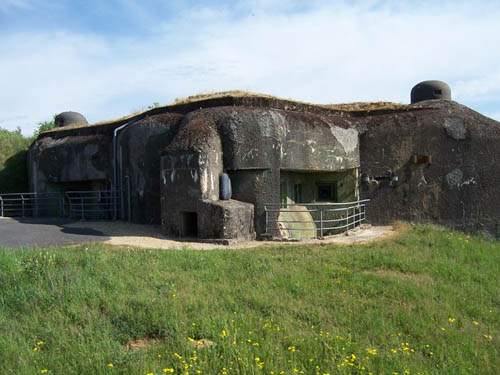Presentation
At your service Tourism
Ecotourism Vehicles
Contact us Other Partners Smartphones Important info
Conditions Legislation & Regulations Legal Search
|
Tourism - The Maginot Line in the Ardennes / Sedan region (World War II)
The Maginot Line in the Ardennes / Sedan region (World War II) The Maginot Line, named after a French Minister of War, build in the 1930s in the wake of the static and defensive combats in WW I, was for those days an ultramodern defensive fortification along France's eastern and northern borders. Made of thick armoured concrete, "crowned" with armoured cloches & retractable turrets and supplied with heavy guns, it had living quarters, supply storehouses, anti-tank defences and underground rail lines. The specification of the defences was very high, with extensive and interconnected bunker complexes for thousands of men; there were 45 main forts (grands ouvrages) at intervals of 15 kilometres (9.3 miles), 97 smaller forts (petits ouvrages) and 352 casemates between, with over 100 kilometres (62 miles) of tunnels. Artillery was coordinated with protective measures to ensure that one fort could support the next in line by bombarding it directly without harm. The largest guns were therefore 135 mm (5.3 in) fortress guns; larger weapons were to be part of the mobile forces and were to be deployed behind the lines. (Source: wikipedia.org) Despite the (false sense of security of) the Maginot Line and the Ardennes Forest (natural barrier), the German forces managed to cross in May 1940: On May 10 at 05:35, the XIX Panzer Corps initiated the offensive, advancing in three columns through the Ardennes (2d Panzer Division in the north, 1st Panzer Division in the center, and 10th Panzer Division in the south). On May 11, by day’s end, the lead elements of the 1st Panzer Division were 5 kilometers from the French border and 20 kilometers from Sedan. On May 12, the 1st Panzer Division covered the remaining 20 kilometers to the banks of the Meuse river in just 4 hours, and by day’s end, the entire corps had closed on the east bank of the Meuse just opposite Sedan. During the night of May 13, Heinz Guderian’s engineers managed to erect a bridge across the Meuse, and Guderian pushed more than 150 armored vehicles across the bridge that night. When morning came,he had a coherent force on the far bank and began to push for a breakout. Lieutenant-Colonel Hermann Balck’s 1stPanzer Grenadier Regiment managed to cross the Meuse at Glaire, just north of Sedan, during the early evening hours of May 14 For the next five days, Guderian will advance to the West and arrive in Abbeville (on the Channel coast) on May 19 ... all behind the Maginot Line. The French armies had not been destroyed, but Guderian’s lightning advance (Blitzkrieg) had split in two the Allied Forces. Most of the fortresses were undefeated. The French fortresses troops had to surrender after the German army managed to invade France and the Armistice signed on June 22, with the honors of the war. Our one day tour leaves from Dinant to Sedan, starting the battlefield tour in Sedan, from where we will essentially concentrate on The Fortified Sector of Montmédy (Secteur Fortifié de Montmédy) that controlled the section of the Maginot Line between Sedan and Longuyon, a distance of about 60 kilometres (37 mi). The sector sector was not as strongly defended as other sections of the Maginot Line, facing the southern Ardennes region of Belgium. Large portions of the Montmédy sector were defended by fortified houses, blockhouses, or casemates. The sector includes only four ouvrages of the type found in stronger sections of the Line. The weakly defended area in front of Sedan was the scene of a major breakthrough by German forces in the opening of the Battle of France. This was followed by a German assault on the Maginot Ouvrage Villy - La Ferté, which killed the entire garrison, the only such event on the Maginot Line. After our visit to La Ferté (underground included), we'll drive to the small village of Stonne where heavy fighting took place: the village changed hands 17 times in three days of fighting (May 15 - 17). Operations near the town involved 90,000 German troops and 300 German tanks, opposed by 42,500 French soldiers and 130 French tanks. The Germans lost 26,500 men (wounded and killed) and 24 tanks, while the French lost 7,500 men (wounded and killed) and 33 tanks (source: wikipedia.org). After Stonne, we'll drive back to Dinant. All our tours are private tours: only you / your group will be on board. Guided tour with battlefield guide on board. On board our Ford Tourneo for up to 6 people, or our Fiat for up to 15 people. Foresee some walking. Contact us for more details : Scenic Tours sprl Creation date : 26/02/2013 @ 18:16 |


Powered by GuppY v2.4 - GNU Public License - © 2004-2016 Thierry Houba

 © 2004-2007
© 2004-2007 

Document generated in 0.02 second




 Top
Top 








